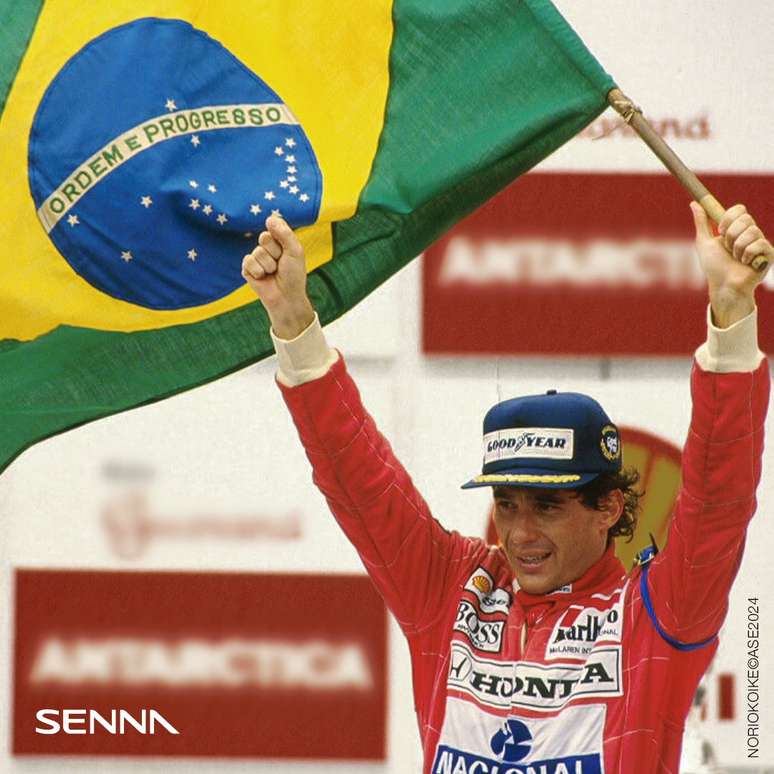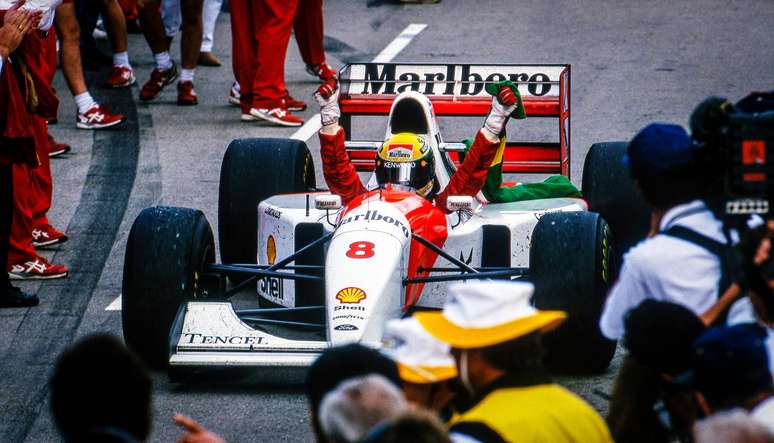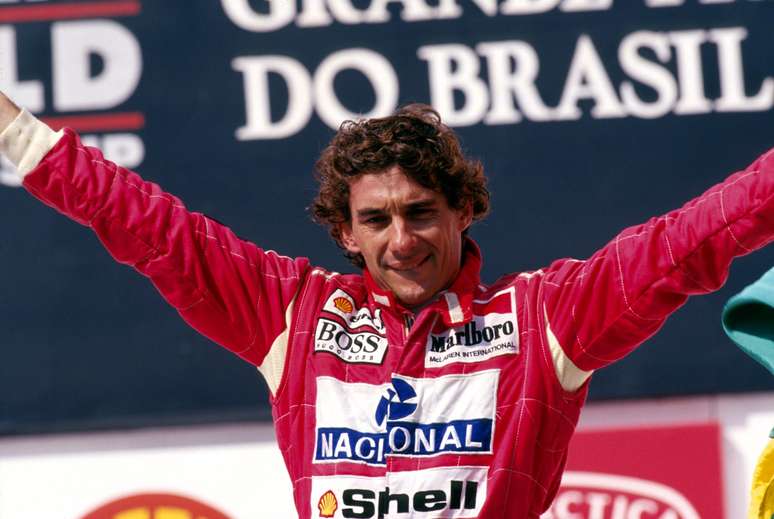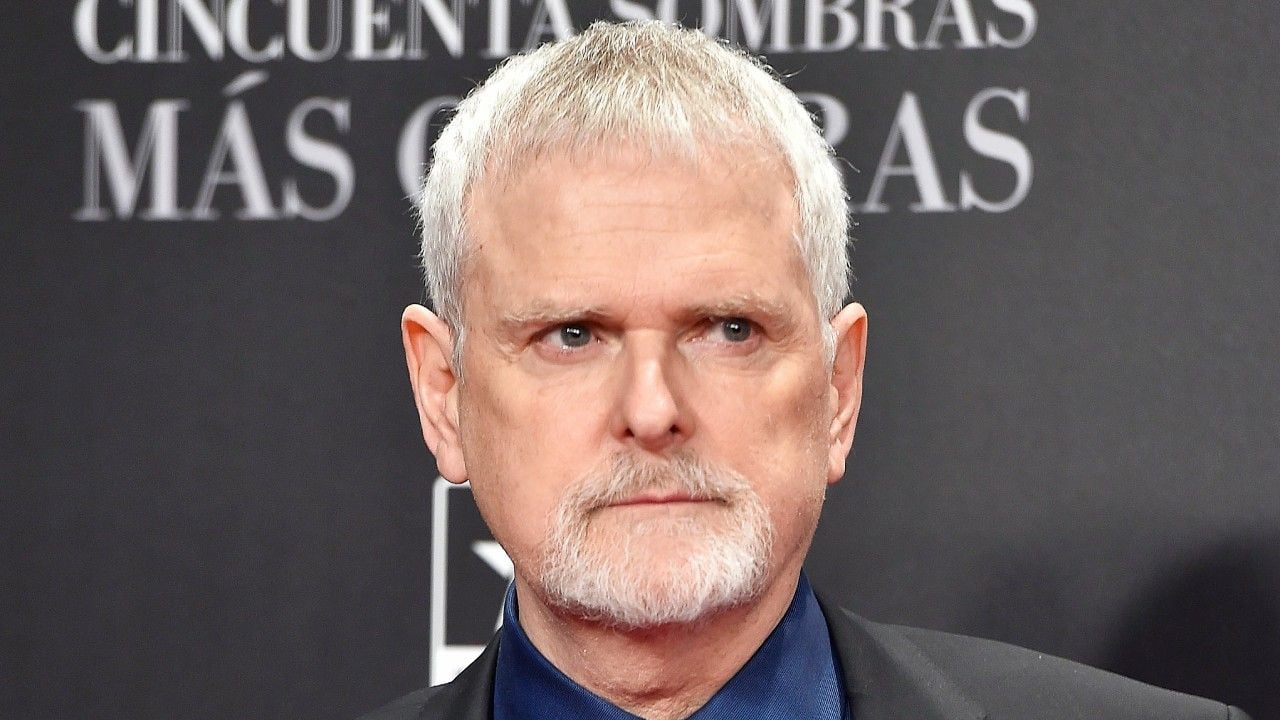Few athletes have reached the level of the Brazilian driver. Light that has been shining for decades, but also a shadow on those who came after
Summary
The image of Ayrton Senna, too big in the collective imagination, cast an enormous shadow on those who arrived in Formula 1. Barrichello and Massa had, in part, their lights obscured by this shadow. With greater distance from Senna’s fatal death, his image is increasingly elevated, closer to the gods of sport. From there his shadow becomes smaller for mere mortals. May there be light for those who arrive, under the eyes and blessing of the great Ayrton Senna!
It is impossible to measure in numbers what Ayrton Senna was and represented. While his three titles, 41 wins and 65 pole positions are significant, the numbers from decades past tend to look smaller today, with eyes accustomed to the inflated marks of ever-longer seasons and ever-longer careers.
Senna was much more than an impressive statistic. In a relatively short career, the Brazilian has developed rapidly. In a short time he went from a great rider to an excellent one, soon rising to the rank of genius and being considered by many to be the greatest of all time in his sport.
In front of the Brazilian public, Senna was a revolutionary. The local public, who was beginning to appreciate Formula 1 thanks to the successes and talent of Emerson Fittipaldi and Nelson Piquet, gained another driver to support. And it didn’t take long for Senna to become a fan favorite. F1, until then a niche sport, won over the masses with Senna in the lead and attracting a countless legion of fans. With Senna’s success a new national habit was born: bringing the family together to watch and enjoy motor races.
More than a reference in sport, he has become a national and international idol. A celebrity of the highest level. The world saw someone emerge to sit next to guys like Pele, Muhammad Ali, Michael Jordan and a few others in the Olympus of history’s greatest athletes. His career and his life have been watched with careful eyes by Brazilian fans.
And, to top it all off, this figure who emerged before the world could not help but shout wherever he went that he was Brazilian, with great pride and with great love. Always carrying the green-laurel flag in his moments of glory, coining motivational phrases and inspiring a generation to go further, seek limits, strive for success, overcome obstacles, chase dreams and stay focused.
Senna became the complete package. An athlete with excellent talent, unique dedication, irrefutable success, unique charisma and who has built an exemplary public image, averse to major controversies and controversies (ok, there were some on the slopes…).
Suffice it to note that, 30 years after his death, his legacy is being comprehensively remembered by the press. He quickly thinks about how many people would be able to move the media so intensely 30 years after his death. Well, he’s as big as Ayrton Senna.

An empty post
His death at the height of his career, in the full exercise of his profession and before the eyes of the world caused a shock worthy of few remembered historical events. A trauma so great that any Brazilian over the age of 40 can accurately describe what he was doing that fateful morning of May 1, 1994. A trauma that does not go away easily, if it ever will.
Senna died that May 1st, but the world continued. And the world had to learn to move forward without Senna.
The void that suddenly occupied the most reference position in Brazilian sport remains there, unfilled. It is true that there were names who shone in certain periods and occupied prominent positions in the popular imagination: Guga, Romário, Ronaldo, Oscar, Hortência, Cesar Cielo, Rebecca Andrade and even Neymar reached the highest levels in their sport and a good reputation before the general public, but Senna never ceased to shine as a great supporter of Brazilian sport, second only to Pelé.
Inspiration for a generation
The enormous popularity that motor sports achieved in Brazil with the Senna phenomenon has made this sport a dream for many kids who grew up watching the races every other Sunday. There have been many who have taken their chances in the incredible world of motor racing and managed to progress in their careers.
Brazil has begun to train pilots in quantity and quality, even if their careers have matured abroad. The sequence of successes that began with Emerson, elevated by Piquet and taken to another dimension by Senna, increased the Brazilian driver’s reputation exponentially. “What’s in Brazil’s water?” Europeans and Americans asked themselves, with the flow of Brazilians running (and winning) in the northern part of the globe. Brazilian driver turned fashion brand.
The great visibility of motorsport in Brazil at that time facilitated the search for sponsorships, which opened the doors to young Brazilian talents all over the world. Between Senna’s third championship in 1991 and the 10 years following his death, no fewer than 11 Brazilian drivers reached F1. Another dozen reached CART/IRL, USA.

The big shadow
It turns out that, although all of these are good drivers, endowed with virtue and competence, none of them is Ayrton Senna. And this, in the eyes of a large part of Brazilian public opinion, was a problem. Senna left without warning and without preparing a replacement. For many people, the void he left needed to be filled by another pilot. And this burden fell most cruelly on the two most successful names of the next generation.
Time has shown that a considerable part of the new audience formed during the Senna era, in fact, did not like watching and understanding Formula 1. The interest and pleasure was in seeing a Brazilian win. This practice is partly due to the way coverage was given at the time, which, on the one hand, helped project and exalt Senna’s winning image, and, on the other, “taught” the public that only the Brazilian’s victory mattered, suppressing the various layers and complexities of the sport.
Rubens Barrichello even shared tracks with Senna when he was still starting his F1 career. With the departure of his idol, the mission (and burden) of bringing Brazil’s legacy to the track fell on him. In the eyes of much of the public he should win, and quickly. The fact that in subsequent years the then boy Rubinho drove a simple Jordan, then an equally modest Stewart, did not matter. Winning was an obligation. When he arrived in a top team, the demand increased even more, without worrying that alongside him there was the driver who rebuilt Ferrari and for whom the team, of course, would have worked.
Felipe Massa arrived at Ferrari faster and was not long in being called up for titles and victories. Like Rubinho, either he won, otherwise he was labeled a “stuck wheel” by this all-or-nothing crowd.
Both have built successful careers in the category, with 11 wins each, two runners-up for Rubinho and one for Massa. These are brands that place them among the greatest of their generations. Barrichello has for years held the record for the most races in F1 history, which only speaks to his value as a driver.
The image of Senna, too big in the collective imagination, cast an enormous shadow on those who arrived in Formula 1. Barrichello and Massa had their lights, in part, obscured by this shadow.

Let there be light!
The demand for a “new Seine” exerted unnecessary and disproportionate pressure on the motorists of an entire generation that came in the idol’s wake, while the country desperately searched for someone to take its place as a great reference.
It is clear that well-structured basic categories, sponsorships and teams willing to support them, physical, technical and mental preparation are fundamental in the training of drivers and athletes of any sport. But the hard truth is only one: there will never be another Ayrton Senna.
The unique combination of high doses of rare talent, focus, motivation, dedication, drive, ambition, charisma and inspiration cannot be taught. It is the gift that whoever has it has had it from birth. Senna was born with the complete package. A driving machine. Lightning that only strikes once.
30 years after his death, his image remains as unshakable and unchallenged as that of the great Brazilian sporting idol of the last 50 years – and nothing indicates a change in this scenario. It is up to us to keep his legacy alive, respecting who he was and still is a reference and understanding that no one can be charged such a high price. There is space for all those who come to build their name and leave their mark, with work, competence and passion. No comparison.
As for the two mentioned in the text, it is comforting to see the recognition and affection that the public has shown towards them wherever they go with the Stock Car. It’s wonderful that Barrichello and Massa were able to return to racing in Brazil and conclude their careers close to the local public, confirming what they have always demonstrated around the world: they are great!
With greater distance from Senna’s fatal death, his image is increasingly elevated, closer to the Gods of sport. From there his shadow becomes smaller for mere mortals.
May there be light for those who arrive, under the eyes and blessing of the great Ayrton Senna!
Source: Terra
Rose James is a Gossipify movie and series reviewer known for her in-depth analysis and unique perspective on the latest releases. With a background in film studies, she provides engaging and informative reviews, and keeps readers up to date with industry trends and emerging talents.







